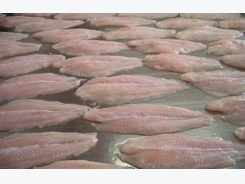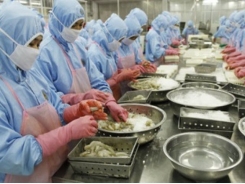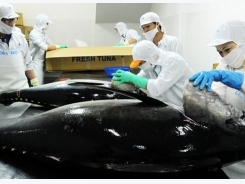Aquaponics: economy of scale is the key

Aquaponics, which combines aquaculture and hydroponics, is increasingly becoming popular in many countries due to its ability to boost farm output and reduce waste. Glenneis Kriel spoke to Ruann Coleman of Eden Aquaponics about his experiences with this production system.
A wide variety of lettuce and herbs are produced in the aquaponics production system. Photo: Glenneis Kriel
Wealth manager, Jack Probart, started Eden Aquaponics in 2013 on Shanzeley Farm between George and Uniondale in the Langkloof to prove to himself and others that aquaponics is a sustainable way to increase food production.
The technique is renowned for using fewer resources, such as land, water and fertiliser, than open-field production systems.
The first two years at Eden Aquaponics were devoted to getting the system right. During the past two years, the focus has been on fine-tuning.
“My father did a lot of research before starting the project and found little information tailored to the unique production conditions of South Africa,” explains Ruann Coleman, marketing and logistics manager at Eden Aquaponics. “With the system and production management under control, we’ve actually started making money from commercial sales.”
The company’s ultimate vision is to empower others to produce their own food. “The idea is to provide support services to individuals or companies who want to use aquaponics to grow their own food and become self-sustaining.”
How it works
In aquaponics, waste water from an aquaculture system is fed to a hydroponic system. Bacteria break down the by-products into nitrites and then nitrates, which are used by the plants as nutrients.
The water is then recirculated to the aquaculture system, and the cycle starts again.
Ruann estimates that a properly managed aquaponics system could end up using less than 2% of the water required to grow the same quantity of produce in an open land.
Eden Aquaponics currently produces watercress, cabbage, spinach, celery, chives, coriander, parsley and a variety of lettuce in 16 000ℓ of water. Tilapia are also sold on a limited scale, and are not intended as a second income stream.

Eden Aquaponics continually experiments to improve production. Here vermiculite is being trialled as a growth medium.
Although there is sufficient space to significantly increase its fish production, Eden Aquaponics keeps only as many fish as are required to generate fertiliser for the plants – between 3 000 and 4 000 fish at a time. “There’s not a great demand for fish in our region because we’re so close to the ocean,” explains Ruann.
He adds that the company can produce up to nine harvests of salad greens and herbs throughout the year, a yield that would be impossible with open field production due to climatic conditions.
“Plants under protection are also less vulnerable to pests than those grown outside. You can produce up to eight times more food with aquaponics than with open- field production systems.”
Eden Aquaponics’ produce is also “as organic as can be”, according to Ruann, as no pesticides or chemical fertilisers are used during the production process.
Trial and error
Making the system operate successfully took much trial and error. “We’ve paid a lot of school fees in understanding the system, almost as much as the amount spent on the infrastructure, which has been significant,” says Ruann.
“Some people are keen to have aquaponics setups in their gardens. But without sufficient scale, it can be a very expensive hobby.”
Eden Aquaponics has two 1 500m² greenhouses, and three 5 000ℓ fish tanks are used in each of these.
Separate tanks are used for fish of different ages. “Fingerlings need to be separated from older fish to prevent the latter from eating them,” explains Ruann.
Lettuce and herb seedlings are grown out on custom-built rafts made in part of IsoBoard thermal insulation boards. The plants, placed in a neutral medium, are inserted in holes in the boards with their roots hanging down into the water.
“At the moment, we produce 20t of salad greens and herbs per year from 2t of tilapia,” says Ruann.
Fingerling hatchings and seedling germination are outsourced, enabling Ruann to focus on the core business.
Tilapia are highly sensitive and require stable tropical water temperatures and oxygen levels to thrive. Water pH must be kept between 6,5 and 7. These variables are monitored continually and managed for optimal production.
The fish are fed a premixed ration and the system is flushed weekly to prevent the build-up of harmful organisms.
An optimal ecosystem
“With aquaponics, we create a beneficial ecosystem for fish and plant production, so we try to maintain the ecosystem for as long as possible,” says Ruann. “We don’t want to flush out all the water all the time, because then we’d have to rebuild the ecosystem. We add only 1 000ℓ to 2 000ℓ of water per week.”
Waste water moves from the fish tanks through a vortex filter and bio filter to break ammonia down into nitrates and render the nutrients in the water more accessible to the plants.
Before the water is pumped back into the fish tanks, it is treated with a UV filter and oxygenated with a blower.
“UV helps destroy harmful organisms that might have started building up in the system,” notes Ruann.
The system is modular, allowing problems to be dealt with where they occur. “A disease outbreak in one module can be addressed by removing the affected plants and cleaning out the module, without affecting the system as a whole.”
Sick fish are removed from the system and placed in quarantine, where they are treated until they recover.
Temperature control has been one of the most challenging aspects of production.
“To thrive, tilapia should be kept in water with a temperature of 22°C to 24°C,” says Ruann.
“This has been quite a challenge for us, as the Langkloof is subjected to extreme temperatures.
“It gets very hot in summer and freezing cold in winter.”
The greenhouses are insulated with plastic, and heat pumps and wood-fired hot water systems are used when the temperature is low enough to affect plant growth. Blowers are used to cool down the greenhouses when temperatures rise above 30°C.
Longer-lasting produce
According to Ruann, Eden Aquaponics’ crops have a much longer shelf life than traditionally produced vegetables.
“Whereas salad greens usually go off within a day or two without cold storage, ours last up to four days,” he says, adding that the operation maintains the cold chain as far as possible to guarantee good-quality produce and a shelf life of seven days.
Eden Aquaponics supplies lettuce and herbs to various major retailers, as well as a number of restaurants, in the Southern Cape region.
Related news
Tools

Phối trộn thức ăn chăn nuôi

Pha dung dịch thủy canh

Định mức cho tôm ăn

Phối trộn phân bón NPK

Xác định tỷ lệ tôm sống

Chuyển đổi đơn vị phân bón

Xác định công suất sục khí

Chuyển đổi đơn vị tôm

Tính diện tích nhà kính

Tính thể tích ao




 Farming pegged as export promise of 2018
Farming pegged as export promise of 2018  Vietnam’s seafood exports to EU see positive changes
Vietnam’s seafood exports to EU see positive changes